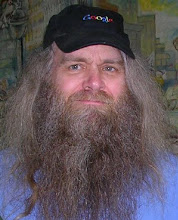we seek to ground
all thinking
in a precise common visualisation
of local spacetime
Earthglobe flattened Bucky-wise
time-layers stacked, most recent on top
colored lines tracing worldpaths
with any statistic
mappable to color
usually red for high values
and blue for low
and today we consider webpageviews
15 years of hosting
with the webhosts at any instant
in those 15 years
ranked for popularity
with the top one-fifth colored red
the bottom one-fifth blue
so we can trace
ever-increasing numbers of hosts
starting blue/slow
most never cracking green
but some few catching on fast
some few more catching on slow
popular hosts tending to cluster
geographically
in the hi-tech corridors
centers of red and orange
diluting outward to yellow and green
with the boonies normally blue
(exceptions being of special interest:
who's that, bucking the trend?)
popularity could alternately
be gauged cumulatively
so slow and steady tortoises
beat meme-of-the-hour hares
earlybirds earning regular colorboosts
just by enduring
now let's break this down by pages
pages color-ranked by popularity
instantaneous or cumulative
hosts adding pages
quickly or slow
the most popular sites
adding hot news hourly
with any individual page
quickly lapsing into obscurity
(which are the steady tortoise-pages,
the Net classics everyone must read eventually?)
now let's break it down by words
less read blue
more read red
headlines and first paragraphs
are read most
boring sections skimmed
only the best writers
making every word count
so now we count
for each second of passing time
how many times each English word
is being read
worldwide
and we collect these stats for a day
and build a list
of the million commonest English words
red orange yellow green blue
now we alphabetise that list
and reduce each word to a dot
of its appropriate color
and we project that line of dots
into space
along the orbit of Moon
one million dots
across 1.5 million miles
(leaving us lots of mental room to expand
although the scale is finally irrelevant)
and into those 1.5 mile gaps
we insert alphabetical word-pairs
aardvark-aardvark
aardvark-aardwolf
down to aardvark-zymergy
ten word-pairs per inch
each a colored dot
to represent that pair's popularity
using the same colorscale
as for single words
and now we divide each one-tenth inch
to hold a million threeword triplets
and again and again and again
until any popular 5000-word web-rant
has its own colored dot
based on how often it's been read
now
we move all the red-dot word-strings
into the closest Earth orbits
the orange dots almost as close
yellow and green also intermediate
blue dots still at Moon's length
and we link each wordpair/triple/etc
to its component words/pairs/etc
by elastic bands
(since a pairing will normally be
less common than either component
these bands will link inner-more components
to outer-more groupings)
and we'll let the elastics pull the dots
into mega-clusters
(red dots still constrained to red orbits
but freed from their original alphabetical positions
within those orbits)
one can hope
the resulting groupings
would match, eg,
the basic Yahoo categories
technical word-clusters
sports word-clusters
literary word-clusters
political word-clusters
and an individual's web history
ought to favor certain clusters
if we track any individual's surfing
we can visualise the stream of words
they're reading
shrinking our whole Moon model
down to a disk that fits
within the circumference of their brain
lighting up, each moment
the dot for the word they're reading
and for the most-recent pair
triplet etc
so when they finish reading
a popular page
they'll have incremented the 'counter'
for that page's particular word-sequence
maybe boosting it
from blue-orbit to green
